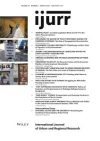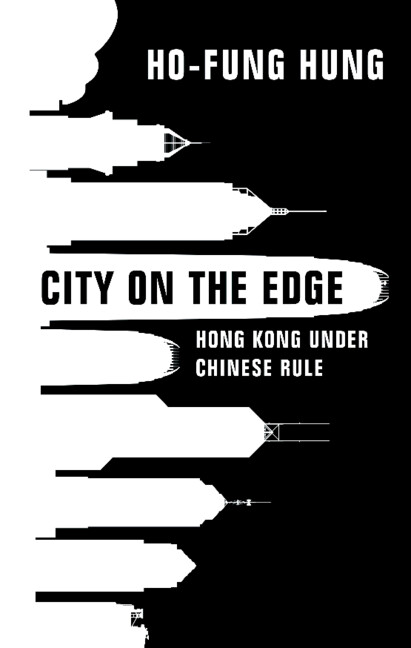The world has witnessed the remarkable and seemingly inexorable economic rise of China since the 1980s. A significant factor in this rise, according to Ho-fung Hung, is the various economic roles Hong Kong has played which have helped facilitate the unprecedented growth of China. Hong Kong has occupied a unique geopolitical role as well. As one of the world’s leading global cities, it has long been considered an exemplar of free-market capitalism as an affluent, thriving metropolis with strong trade and financial linkages to the West. Yet it also borders China, which until fairly recently was an impoverished and isolated country largely closed off from the global economic system.
However, in recent years a dramatic turn of events has occurred within Hong Kong, where the Chinese Community Party (CCP) leadership has taken significant steps to chip away at the ‘One Country, Two Systems’ agreement enshrined in the Basic Law of 1997 which guaranteed Hong Kong a degree of political and legal autonomy until 2047. This 50-year agreement, enacted when China reclaimed sovereignty over Hong Kong from Britain, allowed the territory to maintain an independent legal system, its own currency, and to a greater or lesser extent its existing political structure, while the Chinese government would be responsible for Hong Kong’s defense and diplomatic relations. Hung’s cogent analysis of what has transpired to largely dismantle this agreement should be of note to anyone with an academic interest in Hong Kong or China, as well as to urban scholars of East Asia, global cities and development.
City on the Edge: Hong Kong under Chinese Rule begins by revisiting the dramatic unrest of mid-2019 prompted by the proposed extradition law, whereby criminal suspects in Hong Kong would potentially be sent to mainland China and be subject to judicial proceedings at the hands of the CCP. Aside from the sizable demonstrations and visible street protests, as Hung shows, there was also widespread opposition to the extradition bill among Hong Kong business elites and even mainland Chinese executives in Hong Kong, both groups that traditionally toed a pro-Beijing party line.
To explain how Hong Kong has reached its current situation, Hung provides an historical overview of Hong Kong’s development. He presents a number of novel points. For one, Carrie Lam, Hong Kong’s Chief Executive during the 2019 uprising, was herself a Mao-influenced student protestor during the late-1970s. Additionally, after gaining power in 1949, the CCP and the British colonial authorities maintained a tacit agreement that China would not invade Hong Kong so long as underground CCP activity in the colony (such as newspapers and films) was allowed to continue. Following the handover, Hung challenges the argument that Hong Kong simply became less important to China as the latter’s economy continued to grow dramatically. As he notes, although Hong Kong’s gross domestic product (GDP) relative to China’s has progressively decreased since 1997, the same can also be said for other comparable small, developed economies vis-à-vis China. According to Hung this simply reflects the magnitude of China’s economic growth, not Hong Kong’s relevance to that growth per se.
Hung convincingly spells out some reasons why Hong Kong has been and continues to be so important to China and the CCP. While the post-handover ‘One Country, Two Systems’ model was clearly meant to placate Hong Kong’s elites and the middle class, it has benefited China too. As the author argues, Beijing wanted to maintain a degree of economic separation from Hong Kong after regaining sovereignty in 1997, and in a sense, the current situation gives it the best of both worlds. On the one hand, the CCP gets to maintain state control over the mainland economy (e.g. financial markets) and avoid unpalatable liberalization and opening, yet it can also utilize Hong Kong’s global financial linkages as it sees fit—for incoming foreign direct investment (FDI), for example, or for listing mainland state-owned enterprises (SOEs) on the Hong Kong stock exchange. Hong Kong’s attributes in this regard mean that mainland special economic zones (SEZs) such as those in Shanghai or Shenzhen will be unlikely to replace Hong Kong’s functions in the near future. Global businesses and capital simply do not have the same level of trust in mainland SEZs for investment; nor do the SEZs possess Hong Kong’s traditional entrepôt benefits such as its legal system, separate currency and trade-friendly tariff policies.
In the latter portion of the book, Hung considers the theme of ‘resistance’ in Hong Kong as the CCP gradually tightened its grip post-handover. As he shows, almost from the beginning, Beijing began to reinterpret and vocally insist that the emphasis should be on ‘One Country’ and not ‘Two Systems’ for Hong Kong. This encroachment led to the development of a political consciousness. Countering some scholars’ convictions about the political apathy of Hong Kong citizens, Hung describes a long history of democratic protest and social movements which accelerated post-handover up to the 2014 ‘Occupy Central’ pro-democracy movement and the sometimes militant 2019 protests against the proposed extradition bill.
This shared political consciousness can largely be traced to Chinese efforts, beginning in the early 2000s, to integrate Hong Kong socio-economically with the mainland. For Hung, a significant turning point was the influx of mainland tourists into Hong Kong, who previously had been restricted in numbers and to tour groups. The mainland tourists generated social tensions with native Hong Kongers, not only due to their sheer numbers, but also their hoarding of certain products (for example, powdered infant formula) which created shortages for locals, as well as the influx of ‘birth tourism’, whereby women from the mainland coming to give birth in Hong Kong created a paucity of maternity beds in the territory’s hospitals for local expectant mothers.
Among the strengths of City on the Edge is its ability to contextualize what has happened to Hong Kong in recent years within the span of its developmental history. Hung’s work is highly informative in this regard and I learned much that I did not know prior to reading the book, both in terms of Hong Kong’s colonial and post-handover past as well as the more recent protest movements. I did find some of this material superfluous, however, specifically on the pre-colonial history of Hong Kong. Another strength of the book is Hung’s ability to link the city’s status to the history of the CCP—explaining, for instance, that the ‘One Country, Two Systems’ model was not a policy strictly for Hong Kong but had antecedents in Mao’s failed attempts to incorporate Tibet and Taiwan during the 1950s and 1960s, respectively.
In the Conclusion, Hung notes that the imposition by Beijing of the National Security Law in July 2020 effectively ended ‘One Country, Two Systems’ 27 years prematurely. Such a law was unprecedented because it was crafted directly by the CCP itself, without even offering the pretense of allowing the Hong Kong government to influence the legislation. Despite the dire circumstances and loss of freedoms experienced by Hong Kong and its people in recent years, Hung concludes with a somewhat positive view about its future. As he states, Hong Kong has been counted out and underestimated before, but he thinks that the people of Hong Kong will ultimately be more resilient than can reasonably be expected. While I still find it difficult to share Hung’s optimism about its fate, City on the Edge provides an excellent developmental overview of where Hong Kong has come from and how it got to where it is today.
Matthew Green, College of DuPage
Ho-fung Hung 2022: City on the Edge: Hong Kong under Chinese Rule. Cambridge: Cambridge University Press. Cover used with permission of Cambridge University Press.
Views expressed in this section are independent and do not represent the opinion of the editors.

